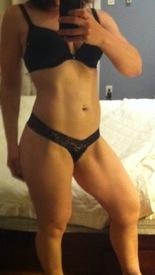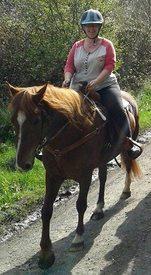Weight lifting belts - good, bad, or it depends?

Doberdawn
Posts: 733 Member
Sometimes I see folks wearing those big fat leather belts while lifting. What exactly is the purpose? If it's to support the back, does that lessen the workout and strengthening you get for your core? I they more important when first starting out or only when you're lifting super heavy at advanced stages? Are they a good idea, if yes... When, Why & for what? Are they a bad idea, if yes , why? Is there a right or wrong way to wear or be fitted for one? If it all depends,.. then on what and why?
I'm here to learn, so please let's discuss.
I'm here to learn, so please let's discuss.
0
Replies
-
It helps your abs do their job better. All it does0
-
Pretty good write up here:
http://articles.elitefts.com/training-articles/benefits-and-proper-use-of-weightlifting-belts/0 -
Pretty good write up here:
http://articles.elitefts.com/training-articles/benefits-and-proper-use-of-weightlifting-belts/
Thank you. That was the kind of input I was hoping for. But I was confused and interested to read the author said to push out with the abdominals, I always tighten mine in for core support. Should I be pushing them out, or is that only with a belt?0 -
Pretty good write up here:
http://articles.elitefts.com/training-articles/benefits-and-proper-use-of-weightlifting-belts/
Thank you. That was the kind of input I was hoping for. But I was confused and interested to read the author said to push out with the abdominals, I always tighten mine in for core support. Should I be pushing them out, or is that only with a belt?
I am probably not going to explain this well, but you need to tighten your core - the pressure of the lifting will have your abs pushing out at the same time. I will see if I can find an article explaining it better.0 -
Adding here the explanation of the Valsalva maneuver, which should be used for squats and deadlifts, and may help explain the question re the core and the use of a belt (plagiarized from Starting Strength):
"It behooves us to understand the function of the Valsalva maneuver, the proper term for holding the breath against a closed glottis while pressure is applied by the abdominal and thoracic muscles, during the squat.
When you inhale, pressure increases in your thoracic cavity. When you hold your breath and tighten your trunk muscles, this pressure increases more. Since your thoracic and abdominal cavities are separated by only your diaphragm, abdominal pressure increases too. Thus, pressure in your abdominal and thoracic cavities is being applied to the anterior side of your spine, from the front to the back. The spinal vertebrae are being held in the correct anatomical position by your back musculature, and this correct position is reinforced by static pressure transmitted to the belly side of the spine across the hydrostatic column of the gut, the essentially non-compressible contents of the abdominal cavity. As pressure in the thoracic cavity increases with a big held breath, and this pressure is increased by the tightening of the abs and obliques, more anterior support develops for the spine. The back muscles position and support the spine from the back; the abs, with the aid of a big breath, support it from the front. A weightlifting belt adds to this effect, its main function being to add to anterior support rather than to apply pressure from the back."0 -
Adding here the explanation of the Valsalva maneuver, which should be used for squats and deadlifts, and may help explain the question re the core and the use of a belt (plagiarized from Starting Strength):
"It behooves us to understand the function of the Valsalva maneuver, the proper term for holding the breath against a closed glottis while pressure is applied by the abdominal and thoracic muscles, during the squat.
When you inhale, pressure increases in your thoracic cavity. When you hold your breath and tighten your trunk muscles, this pressure increases more. Since your thoracic and abdominal cavities are separated by only your diaphragm, abdominal pressure increases too. Thus, pressure in your abdominal and thoracic cavities is being applied to the anterior side of your spine, from the front to the back. The spinal vertebrae are being held in the correct anatomical position by your back musculature, and this correct position is reinforced by static pressure transmitted to the belly side of the spine across the hydrostatic column of the gut, the essentially non-compressible contents of the abdominal cavity. As pressure in the thoracic cavity increases with a big held breath, and this pressure is increased by the tightening of the abs and obliques, more anterior support develops for the spine. The back muscles position and support the spine from the back; the abs, with the aid of a big breath, support it from the front. A weightlifting belt adds to this effect, its main function being to add to anterior support rather than to apply pressure from the back."
Thanks for this Sara - I've just joined but this is a really useful write up.0 -
I wear something similar when I'm shearing, if that helps...:drinker:0
-
Jeepers, this is nuts. I thought, wow, my deads are getting up there. I should ask about lifting belts. But then I thought, I should probably search the forums first . . .
Asked, answered. Thank you Sara0 -
I haven't used one yet, mostly because when I went to buy one none of them were big enough for me (:sad:), but I haven't really suffered because of it.0
-
Awesome stuff here. I'll add my experience here. I've been lifting fir about 6 months and I just got one last week. I realized I needed one because I was not hitting what my 1 rep max should be, or 2 rep max, or 3 rep max! Like I was actually getting weaker. I was increasing reps but not weight if that makes sense?
It takes some getting used to. I only use it when I get near my max on squats and deads right now. It has been a game changer. I used to exhale when lifting on my deads, with the belt I can push out against the belt almost naturally doing the Valsalva maneuver. Now I can translate that to when I lift without the belt.0
This discussion has been closed.




